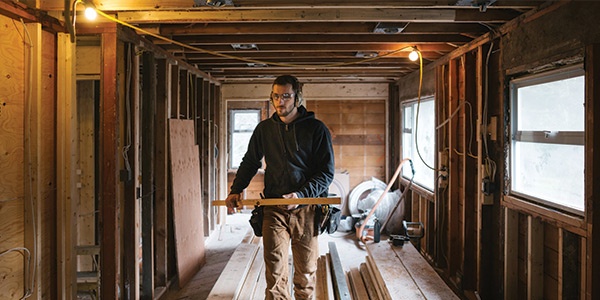
It’s been over 10 years, but the construction sector is still talking about the Great Recession. These days, while strength in the construction industry obviously has returned, its workforce is struggling to keep up with demand.
With many skilled construction workers leaving the industry in the wake of the 2007 financial crisis, the ranks of workers that replaced them have been challenged to fill their shoes.
Recent industry statistics bear this out: A 2017 McKinsey report says that construction industry labor-productivity growth, on a global scale, has trailed the rate for the overall economy over the last two decades.
It’s not that the construction industry isn’t hiring: unemployment in the construction sector, as recorded by the U.S. Bureau of Labor Statistics, has fallen from a high of 25% in March 2010 to 7.4% this year, the lowest yet for March since the series began in 2000. In fact, employment is rising twice as fast as the overall economy, says the Association of General Contractors’ chief economist, and wages are outpacing the private sector as a whole. Even so, the number of unfilled construction jobs has been trending upward since 2009.
General contractors confirm they are facing a construction labor shortage: In AGC’s 2018 Construction Hiring and Business Outlook Report, 78% of firms reported that they are currently having a hard time filling trade positions like bricklayers, carpenters, roofers, and electricians, up from 73% at the beginning of 2017.
These findings are noted even after years of wage increases in the industry: The average hourly wage for construction work has risen steadily since 2007, from a level of $22.72 per hour to $29.43 in March 2018, according to Labor Bureau statistics.
What Building Product Manufacturers Can Do To Help
Besides the regular wage increases, there have been a few initiatives put in place to help ease the worker shortage the industry is experiencing, such as the NAHB’s Workforce Development initiative.
Even so, the labor shortage is expected to persist for some time: Another report from the Labor Bureau predicts that the number of workers in the construction industry will grow at a snail’s pace for several years: just 1.2% per year through 2024.
Fortunately, the labor shortage cloud does have a silver lining: While the construction industry is plagued with labor issues, building products manufacturers and other industry stakeholders can use the situation as an opportunity to make a welcomed difference.
On that note, we offer three marketing outreach ideas we believe can help ease the labor burden in construction, while also helping manufacturers to build new competitive advantages.
- Current demographics. A promising start for building products manufacturers is to address disparities evident in the construction industry’s current workforce. With the Great Recession producing what some have called a “mass exodus” from construction, it’s a good time to take stock in who is comprising the industry today — and who isn’t.
The most recent survey conducted by the U.S. Census Bureau’s American Community Survey (ACS) shows that since the housing recovery got underway, the share of foreign-born workers in the construction workforce has been rising. Immigrants account for close to one in four workers, the highest share recorded by the ACS. Considering that today’s construction workers may be less experienced than their Pre-Recession counterparts, it’s likely a significant number of construction industry workers could benefit from additional training. - Vocational and Training Support. Similarly, manufacturers and other entities may be able to restore trust in the industry by sponsoring vocational training or information sessions about the industry. Vocational training may help to recruit new workers to the industry by knocking down some of the barriers to entry.
- Product Innovation. Finally, product innovation is another tool manufacturers can and should use to help ease the construction industry labor shortage. Building products engineered to be easier to handle and install could go a long way to reducing work complexity and the number of construction workers required.
We’ll be sharing detailed insights on how building products manufacturers can respond to the industry’s labor shortage in future blog posts. Please contact us if we can help you create a customized plan to engineer demand.